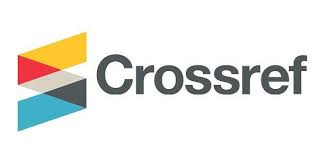PENGARUH BLOCKHOLDER OWNERSHIP, KINERJA KEUANGAN, DAN STRUKTUR MODAL TERHADAP PRAKTIK EKSPROPRIASI PADA PERUSAHAAN MANUFAKTUR
DOI:
https://doi.org/10.25170/wpm.v17i1.7078Keywords:
blockholders ownership, financial performance, capital structure, expropriation practicesAbstract
This research aims to analyze the influance of blockholders ownership, financial performance, capital structure on expropriation practices on manufacture company in Indonesia. Agency theory and Stakeholder theory used to explaine the influance between independent variable and dependent variable. The research periode were 2021 – 2023 with total sampels were 30 companies. Analyses method used descriptive statistic and multiple linear regression using spss version 19. The result shows that blockholder ownership and financial performance have no effect to exproriation practises, while capital structure has positive effect to expropriation practices.
References
Alim, W., Kaleem, M., Abbas, S., & Khan, D. (2020). Do Capital Structure and Cash Holding Expropriate Minority Shareholders: A Case of Non-Financial Concentrated Firms in Pakistan. Journal of Financial Crime, 27(4), 1289-1305.
Almira, N. P. A. K., & Wiagustini, N. L. P. (2020). Return on Asset, Return on Equity, Dan Earning Per Share Berpengaruh Terhadap Return Saham. E-Jurnal Manajemen, 9(3), 1069–1088.
Bai, Y., Lin, B., Wang, Y., & Wu, L. (2013). Corporate Ownership, Debt, and Expropriation: Evidence from China. China Journal of Accounting Studies, 1(1), 13-31.
Claessens, S., Djankov, S., dan Lang, L. H. P. (2000). East Asian corporations. Heroes or villains? In World Bank Discussion Papers, 58(409), 81-112.
Fan,J. P. H., & Wong, T. J. (2002). Corporate Ownership Structure and the Informativeness of Accounting Earnings in East Asia. Journal of Accounting and Economics, 33(3), 401-425.
Freeman, R.E. (1984). Strategic management: A stakeholder approach.
Journal of Petrology, 369(1), 1211-1245.
Ghozali, I. (2021). Aplikasi Analisis Multivariate Dengan Program IBM SPSS 26 Edisi 10. Semarang: Badan Penerbit Universitas Diponegoro.
Gordon, E.A., Henry, E., and Palia, D. (2004).“Related Party Transactions and Corporate Governance,” Advances in Financial Economics, 9(1), pp. 1-28.
Gitman, Lawrence J. (2009). Principle Of Managerial finance. (12th ed.). USA:Prentice Hall.
Hanafi, M. (2003). Manajemen Keuangan: Konsep dan Prinsip. Jakarta: PT Gramedia Pustaka Utama.
Jensen, M.C. and Meckling, W.H. (1976). Theory of the Firm: Managerial Behavior, Agency Costs and Ownership Structure. Journal of Financial Economics, 3, 305-360.
Kusumadewi, Lydia and Wardhani, Ratna, The Effect of three types of agency problem on the firm performance: evidence from Indonesia, International Journal of Monetary Economics and Finance, Januari 2020
La Porta, Johnson, Simon, Florencio L.S., and Andrei, S. (2000). Tunneling. American Economic Review, 90(2):22–27.
Makhdalena. (2014). Pengaruh Blockholders Ownership , Firm Size Dan Leverage terhadap Kinerja Keuangan Perusahaan, 18(3), 277–292.
Morck, R., & Yeung, B. (2003). Agency Problems in Large Family Business Groups. Entrepreneurship Theory and Practice, 27(4), 366-384.
Munawir. (2010), Analisis Laporan keuangan. Yogyakarta: Liberty Yogyakarta.
Pandey, I.M. 2001. Capital Structure and The Firm Characteristics: Evidence from an Emerging Market. Social Science Network Electronic Paper Collection.
Paligorova, T., & Xu, Z. (2012). Complex Ownership and Capital Structure. Journal of Corporate Finance, 18(4), 701-716.
Shanmugam, V. P., dan Irshad, M. (2018). An Analysis of Corporate Governance Issues Arising Out of Related-Party Transactions: With Special Reference to NSE 200 Companies. SSRN Electronic Journal, 4.
Subekti, Imam. 2012. “Relevansi Nilai Atas Informasi Akuntansi, Struktur Kepemilikan Saham, Dan Afiliasi Group Bisnis Pada Perusahaan Publik Di Indonesia”. Simposium Nasional Akuntansi, 15(1).
Supatmi, S., & Widawati, E. (2021). Blockholders Ownership dan Transaksi Pihak Berelasi pada Industri Manufaktur. AFRE (Accounting and Financial Review), 4(1), 107–118.
Tambunan, M. E., Siregar, H., & Manurung, A. H. (2017). Related party transactions and firm value in the business groups in the indonesia stock exchange. Journal of Applied Finance and Banking, 7(3), 1–20.
Utama, C. A. (2015). Penentu Besaran Transaksi Pihak Berelasi: Tata Kelola, Tingkat Pengungkapan, Dan Struktur Kepemilikan. Jurnal Akuntansi Dan Keuangan Indonesia, 12(1), 37-54.
Villalonga, B., & Amit, R. (2006). How do family ownership, control and management affect firm value?. Journal of Financial Economics, 80(2), 385–417.
Wukirasih, K., dan Supatmi. (2022). Pengaruh Struktur Kepemilikan Terhadap Transaksi Pihak Berelasi. Owner: Riset & Jurnal Akuntansi. 6(2), 1398-1411.
Zhang, Y.J. (2011). The Empirical Study of the Relationship between Ultimate Control and Capital Structure in Listed Companies in China. Paper presented at the Management Science and engineering (ICMSE), 2011 International Conference.



